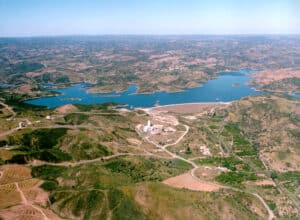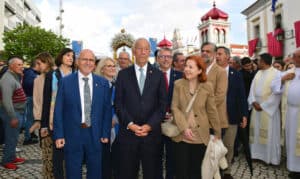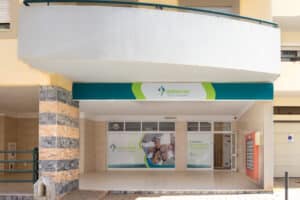The goal is to help people know where to go in the case of a tsunami
Around 140 signposts have been set up along the coastal areas of Quarteira and Vilamoura to help people know where to go in the event of a tsunami.
The project has also signalled 13 “safe” meeting points which are located in higher altitude areas, such as the church of São Pedro do Mar, the Dr. Francisca de Aragão and Dr. Laura Ayres schools and Avenida Papa Francisco.
Six sound warning stations have also been set up that will be “heard in the case of an alert”, Loulé Municipal Council announced in a statement to the press.
The signposts include the distances between the several points of the network and were created to be as easy to understand as possible.
The evacuation routes “aren’t always the shortest, but instead the safest,” the local council added.

Tatiana Neves from Loulé’s Civil Protection Service explained that the project was developed with the “worst-case scenario in mind, which would be a 15-metre wave, taking into account what happened in 1755” – the year of a massive earthquake which destroyed most of Lisbon as well as a considerable area of the Algarve.
Shelters elevated from the ground are due to be built in Vilamoura, where the terrain is mostly flat, particularly near Praia da Falésia.
Now that the signposting has been set up, the next step will involve raising awareness about the possibility of tsunamis and what should be done in the event of one. According to the local council, a bilingual brochure available in Portuguese and English is being created, while awareness events are being planned.
“It’s not enough to just do something. The last step is getting all this information across to the population. People have to know how to behave (in these situations). Fieldwork is fundamental, at schools for example, in order for people to know how the signposts work,” said professor Carlos Oliveira from Lisbon’s Instituto Superior Técnico, who led the project alongside the municipal civil protection team.
As he explained, these kinds of signposting projects already exist in towns and cities such as Portimão, Cascais and Lisbon, although in Quarteira some “innovations” were made.
A second phase of the project is due to be carried out in Almancil, which also has a 14km-long coastline.
Loulé Mayor Vítor Aleixo has highlighted the importance of making sure communities are prepared for these potentially life-threatening events.
“The safety of human communities is one of the first responsibilities of public authorities. The majority of the population lives on the coast, and Portugal is no exception. In recent years, we have systematically worked to prepare ourselves for an unexpected and tragic event, be it an earthquake, a tsunami, a storm, or a drought with potentially disastrous consequences. Our first commitment is to life,” the mayor said.


























